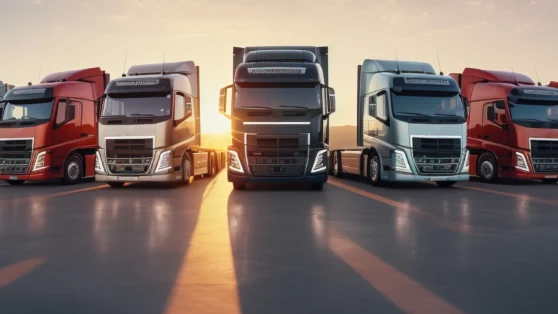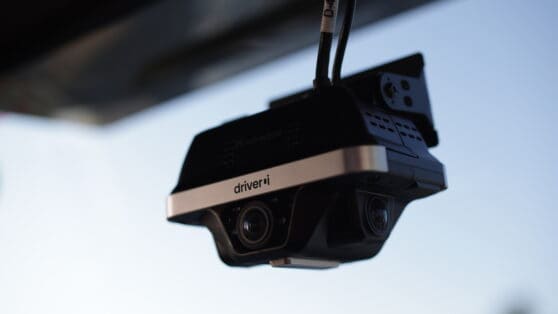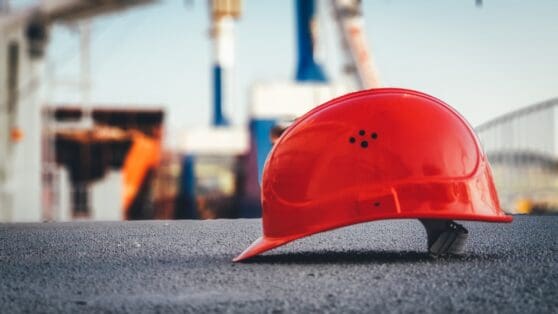Dashcam technology has greatly evolved since the first systems came to market in the mid-90s.
Initially, simply having access to a video record of an event proved invaluable to fleets trying to make sense of a crash or other incident. But it was all conducted after the fact.
These video records offered fleets a path to be exonerated from crashes that weren’t their fault or the fault of their driver, as well as a window into an event’s circumstances. But legacy cameras play no role in helping fleets proactively develop a culture of safety and prevent crashes from occurring in the first place.
Modern video telematics systems like the Netradyne Driveri platform give fleets tools to ward off crashes and connect with their employees in ways simply not afforded by legacy camera systems. While they may come with a slightly higher up-front investment than legacy systems that simply record a few seconds of video to an SD card based on G-force or inertia triggers, the ROI of modern systems like Netradyne’s is so much greater.
Here are some of the hidden costs and unrealized benefits of cheaper, legacy dashcam options:
Cost #1: Limited ability to coach drivers and bolster fleet safety.
Motion-based systems that only record events as they occur do little to help a fleet coach drivers or manage safety performance.
Netradyne’s Driveri platform, meanwhile, gives fleets real-time data and scores for driver behaviors like speeding, following distance, traffic signal compliance, and other critical behaviors. Thus, fleet managers are equipped with insights to coach drivers on an individualized basis and actually improve drivers’ performance over time — something you won’t find on a basic event-based camera.
Having a system that analyzes a driver’s entire day, automatically interprets their safety performance, and then tracks performance on an ongoing basis creates powerful momentum for fleet safety management, well beyond having a 20-second clip of a crash. For example, if a driver has rolled through three stop signs today, a fleet manager can notify the driver and ask them to start complying with stop signs. Likewise for other behaviors: If a driver is following too closely, Driveri or the fleet manager can notify the driver and inform them to maintain a proper following distance.
Armed with data from Driveri, safety managers can work on corrective action before crashes occur by showing drivers where they need to improve.
Fleets using only basic dashcams create risks by allowing uncoached drivers to remain on the road.
Cost #2: Vulnerability to court-ordered “nuclear verdicts.”
“Nuclear verdicts” describe multi-million-dollar awards granted by juries or courts to plaintiffs in crash lawsuits against a trucking company. They’ve grown more frequent over the past decade, and the trend is expected to continue.
Beyond targeting the events of a specific crash with a lawsuit, plaintiff attorneys go after a fleet’s safety culture (or lack thereof) to claim negligence that led to a crash.
Fleets utilizing Netradyne Driveri see real, tangible reductions in speeding, following distance violations, cell phone use, and traffic signal violations. Those results, combined with the ongoing coaching opportunities provided by Driveri, give fleets a strong story to refute any claims of negligence if a crash arises.
Carriers still relying on legacy systems allow messaging that their driver training is inadequate to persist and for lawsuits to exploit.
Cost #3: Lost driver engagement opportunities.
Basic event-based dashcams keep the door closed on opportunities for regular one-on-one engagement, recognizing your best drivers, and fleetwide programs and incentives.
In addition to driver coaching, modern video telematics platforms let fleets know who their best drivers are and make sure they’re recognized.
Netradyne Driveri uses edge computing and artificial intelligence to create a GreenZone score for each driver. The GreenZone score, based on a 1 to 1,000 range, adds points for positive behaviors and consistent safe driving and deducts points for compliance violations, distracted driving, and other unsafe behavior. Drivers above 850 are operating in the GreenZone.
Scores are available in real-time to fleets and drivers, and they’re tracked over time. This provides fleet managers an opportunity to engage in a positive, proactive way with drivers about their driving habits. Positive reinforcement is a science-backed approach to improving behavior, and it allows fleet managers to move away from reactionary, punitive-based reactions with their drivers.
Also, with drivers having access to their scores in the Netradyne app, they become empowered to self-manage and to improve their habits and GreenZone scores without intervention by their fleet manager.
GreenZone scores also allow fleets to implement bonuses for score thresholds or improvements, as well as contests and rewards programs for their drivers.
Final thought
Legacy dashcam systems were a tool for fleets to understand crashes after they happened and to shield themselves from false fault claims. But those legacy dashcam systems do little to help fleets prevent crashes in the first place. Using video telematics platforms like Netradyne’s Driveri, fleets can engage with their drivers, coach drivers on safe driving habits, and build a true culture of safety.






